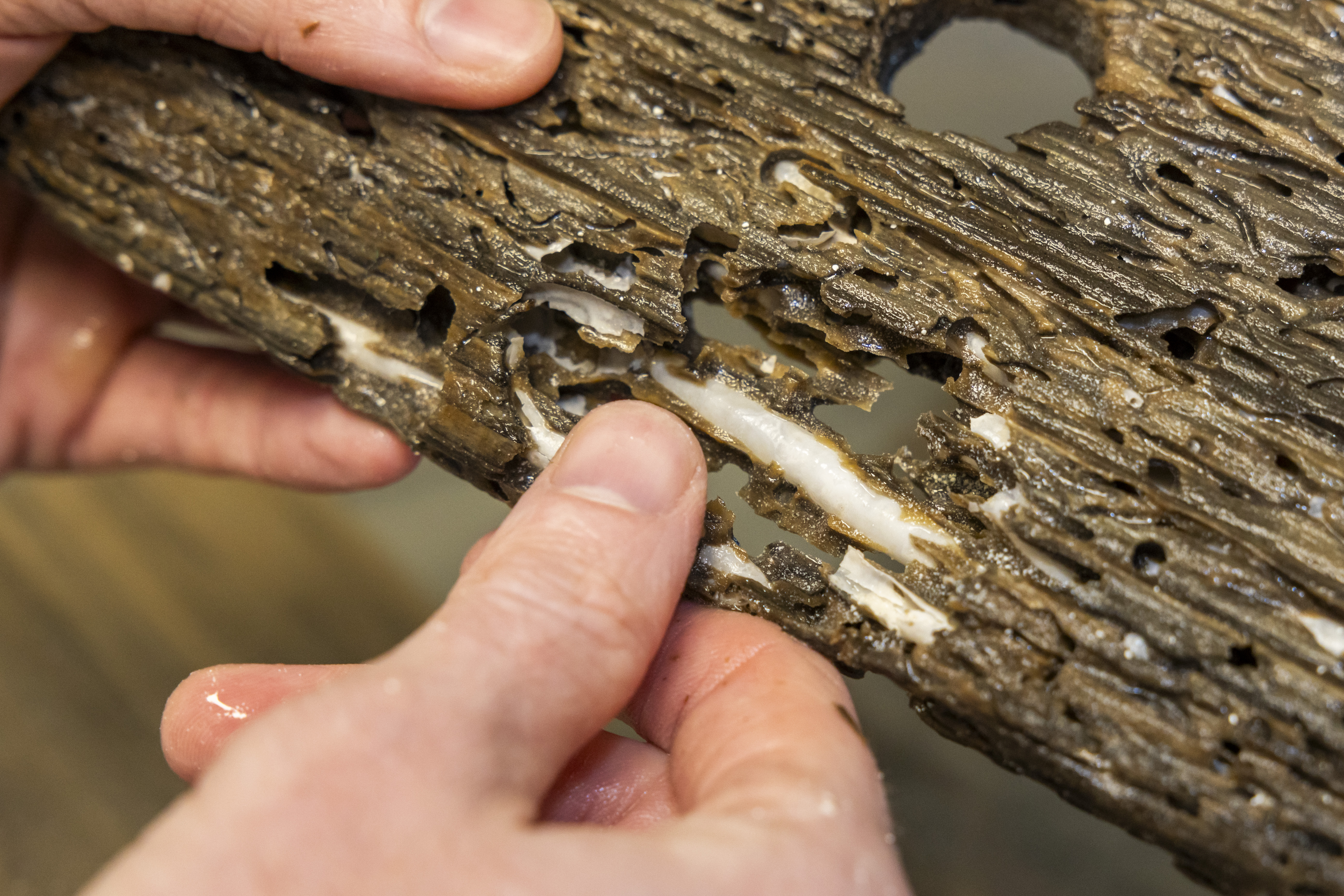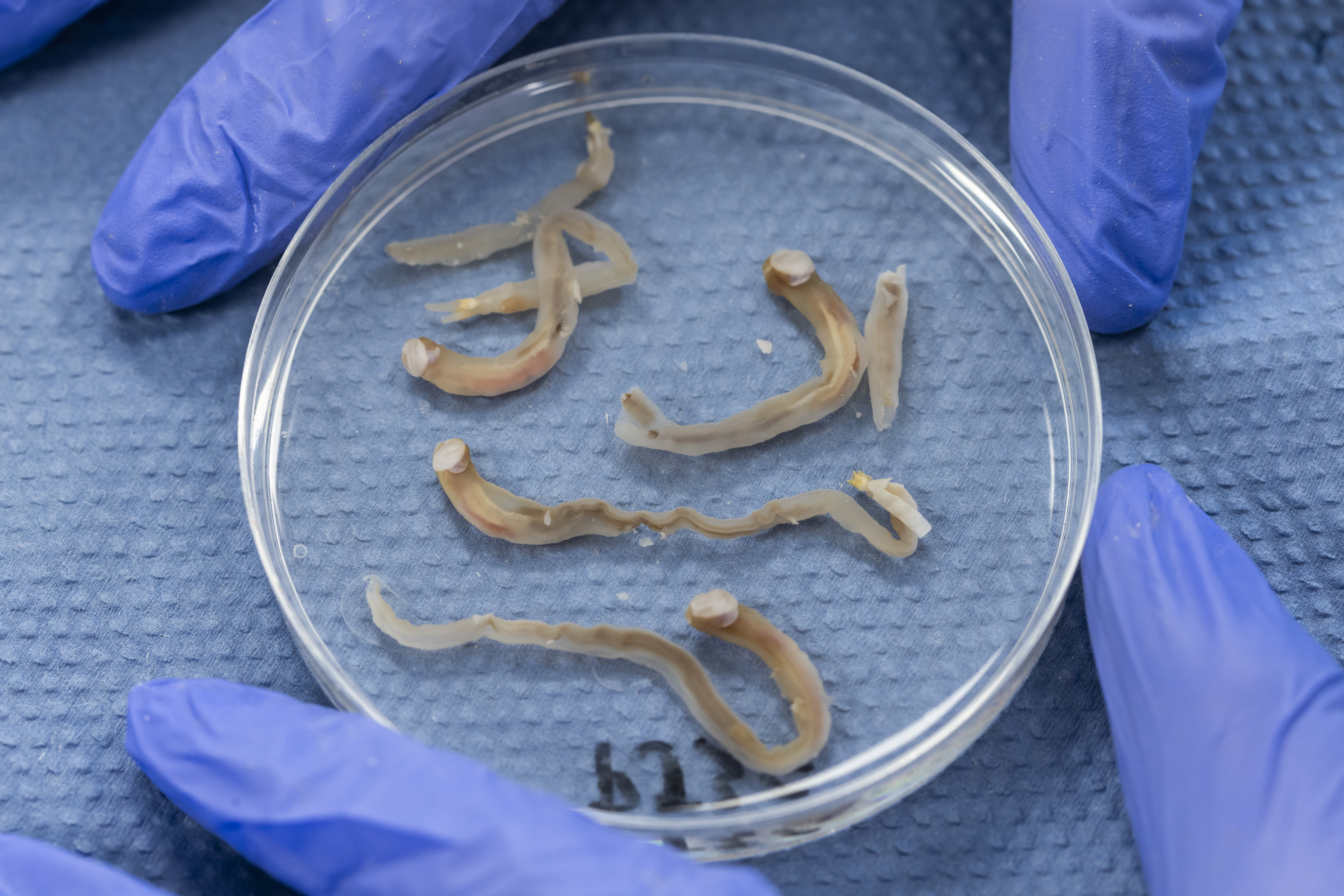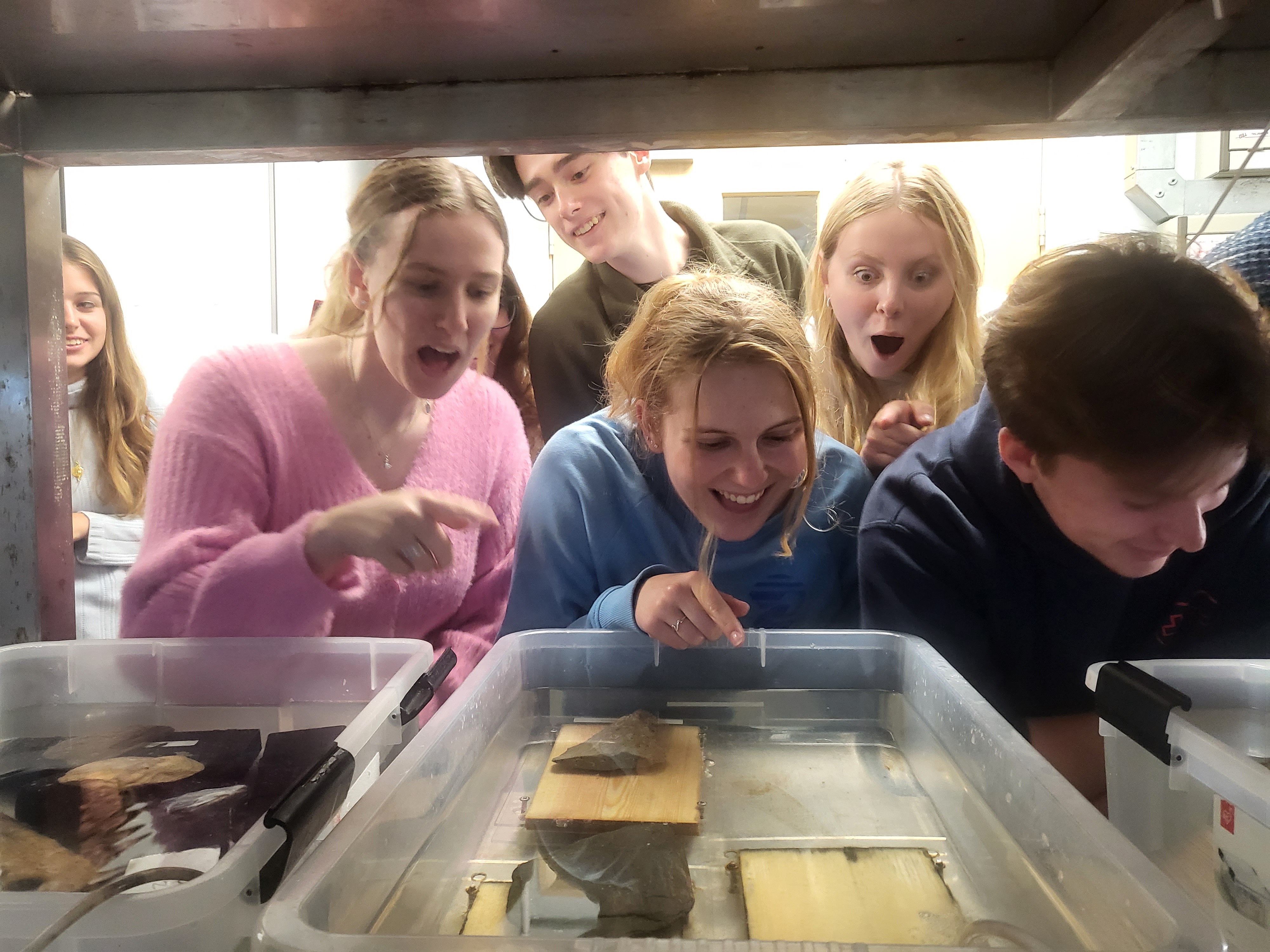Worms for dinner, anyone?

Seen by Westerners for centuries as nothing but a menace, Teredo worms have the potential to become a tasty and nutritious part of our diet. By Nicki Holmyard
Shipworms, also known as Teredo worms, have been viewed as a pest by mariners for thousands of years, due to their ability to bore through wood immersed in seawater. Ships, marine piling, piers and docks can often be found peppered with the tell-tale tunnels created as the creatures rasp their way through the wood, weakening and eventually destroying it.
As marine bivalve molluscs, with a pair of small shells at one end that are highly adapted for drilling, these saltwater clams are related to oysters and mussels. They are eaten as a delicacy by coastal communities in Oceania and southeast Asia.

Dr Reuben Shipway (L) and Dr David Willer
Now, a collaboration of researchers at the Universities of Cambridge and Plymouth are hoping to persuade consumers that naked clams, as they have renamed the shipworms, are a healthy, nutritious, sustainable and tasty food that is easy to cultivate. The question is, can these clams really provide a viable alternative food source that is acceptable to Western food tastes and preferences?
Renaming shipworms was thought to be an essential PR exercise and the researchers point out that there is a “rich precedent for rebranding seafood species for palatability and marketability –
for example, Malabar blood snappers, rock crabs and slimeheads are now marketed as scarlet snapper, peekytoe crabs and orange roughy respectively.”
To test their theory that the shipworms could be grown in a saline environment on land, the researchers first had to design the world’s first modular, fully enclosed aquaculture system that needs just two components – waste wood and water. The clam selected was Teredo navalis, which can grow at a rate of 1.5mm to 2mm per day and produce clams up to 30cm in just six months.
Details of the laboratory-scale pilot study, published in Nature and the journal Sustainable Agriculture, include results from the first nutritional profiling exercise and feeding efficacy assessment.

The species is the world’s fastest-growing bivalve and can reach 30cm in length – Photo: University of Plymouth
“Naked clams really do taste like oysters, they’re highly nutritious and they can be produced with a really low impact on the environment. Naked clam aquaculture has never been attempted before. We’re growing them using wood that would otherwise go to landfill or be recycled to produce food that’s high in essential nutrients,” said Dr David Willer, Henslow Research Fellow at the University of Cambridge’s Department of Zoology and first author of the report.
Willer told me that he first had the idea after reading a book about Christopher Columbus’ voyages, which detailed the sinking of two of his vessels in 1503 as a result of shipworm damage.
“I also have a PhD student whose mother enjoys eating the worms in the Philippines and the idea of growing them in the UK seemed like an exciting challenge. They also grow a lot quicker than blue mussels (Mytilus edulis),” he said.
The research showed that naked clams are rich in nutrients, including vitamin B12 and monounsaturated fatty acids, and share the high protein content of blue mussels. Microencapsulated algal feeds were used to enrich the clams with essential omega-3 polyunsaturated fatty acids. Levels of these will be optimised in future trials.
Dr Reuben Shipway, Lecturer in Marine Biology in the University of Plymouth’s School of Biological and Marine Sciences, has been studying the impact of shipworms in the marine environment for more than a decade.
“We urgently need alternative food sources that provide the micronutrient-rich profile of meat and fish but without the environmental cost. Our system offers a sustainable solution. We’re thinking of naked clams being more popular as a ‘white meat’ substitute in processed foods such as fish fingers and fishcakes. Switching from eating beef burgers to naked clam nuggets may well become a fantastic way to reduce your carbon footprint,” he said.

Marine biology students at the University of Plymouth have been learning about the naked clams as part of their studies – Photo: University of Plymouth
The research has attracted a lot of attention, along with funding from sources including The Fishmongers’ Company, British Ecological Society, Cambridge Philosophical Society, Seale-Hayne Educational Trust and the Biotechnology and Biological Sciences Research Council.
Production systems could be installed in tandem with wind farms or seaweed farms, or located close to consumers, for example in shipping containers as part of a modular system.
A new naked clam sector has the potential to bring considerable economic opportunity if it can be scaled up. UK consumers purchased £8.7bn of seafood in 2019 and if clam sales grew to just 5% the size of this, it would be worth more than £400m, without counting an expected lucrative export market, according to the researchers.
Wide acceptance of the health and environmental benefits of naked clam culture will be needed if investment is to flow into this potential sector. Identification of suitable wood supplies and processing capability is also essential. Consumer and market research will be needed to identify the most acceptable processed formats for the naked clams, whether as a mince, purée, dry power, textured flavoured extruded protein or even as a fresh meat.
Further research is now required to optimise the system in terms of salinity, temperature, wood species substrate and supplemental feed delivery system before scaling up, but the basics have all been delivered. The researchers recommend that future studies should seek to optimise growth rates and feeding protocols as essential components of any commercial application.
What they have opened up is an opportunity to develop a new and hitherto unthought of aquaculture sector that offers a wealth of opportunities for sustainable food production and consumption.
I shall watch progress with interest. And who knows, naked clam culture might even take off and confound the sceptics!

